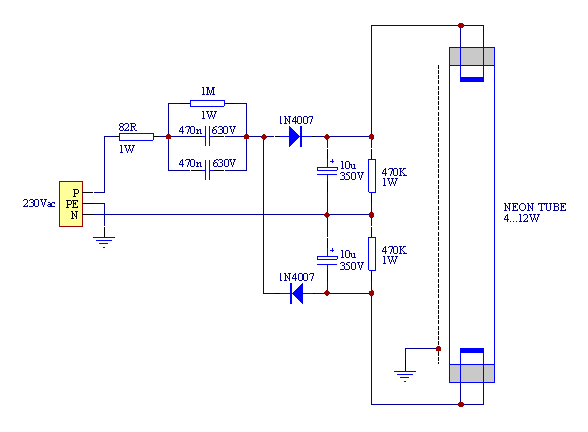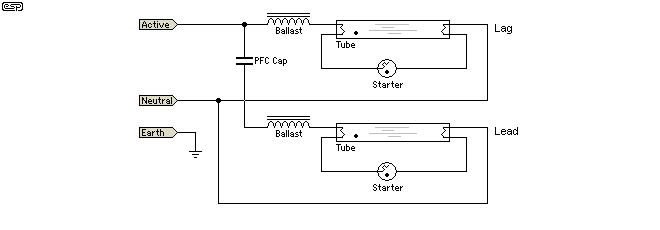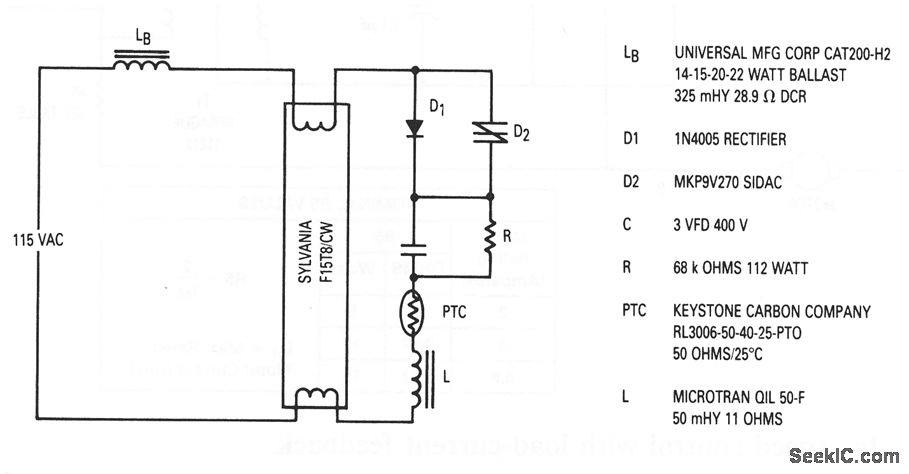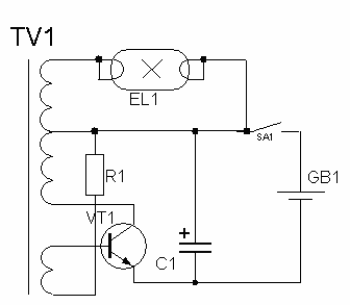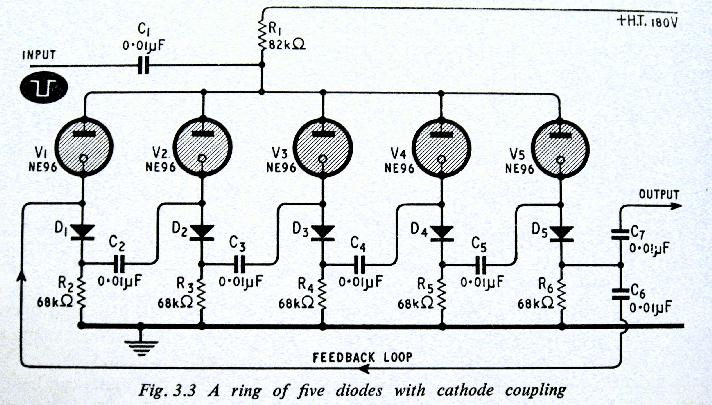
Fluorescent Lamps Ballasts and Fixtures
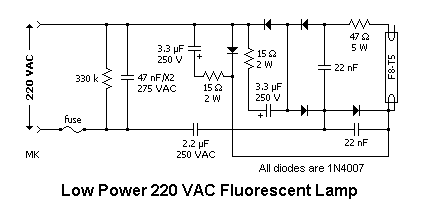
Gratitude is expressed to Don Klipstein for his contributions to this document. His website serves as a valuable resource for information related to lighting technology and includes additional articles on fluorescent and other discharge lamps. The fluorescent lamp represents a significant advancement in small-scale lighting since the tungsten incandescent bulb. Its enhanced efficiency leads to cooler, brightly lit environments in workplaces, homes, and kitchens. The mercury vapor high-intensity discharge (HID) lamp was developed before the fluorescent lamp, with the latter being commercially introduced in 1938, four years after the HID. However, HID lamps have only recently gained popularity in smaller sizes for various applications, including task lighting in homes and offices, as well as for yard, security, and overhead lighting in projectors. Fluorescent lamps are a type of gas discharge tube, similar to neon signs and mercury or sodium vapor street lights. They consist of a pair of electrodes sealed within a glass tube along with a drop of mercury and inert gases (typically argon) at low pressure. The interior of the tube is coated with phosphor, which emits visible light when excited by ultraviolet (UV) radiation. The electrodes, designed as filaments, are heated during the starting process to reduce voltage requirements and remain hot during normal operation due to gas discharge. When the lamp is off, the mercury and gas mixture is non-conductive. A high voltage (several hundred volts) is necessary to initiate the discharge when power is first applied. Once initiated, a lower voltage—usually under 100 V for tubes under 30 watts and 100 to 175 volts for 30 watts or more—is sufficient to maintain the discharge. The electric current traversing the low-pressure gases produces a significant amount of UV radiation, primarily from mercury, despite the gas mixture being mostly inert with about 1 percent mercury vapor. The phosphor coating effectively converts most of the UV radiation into visible light. The specific phosphor blend is tailored to achieve the desired light spectrum for various applications, resulting in cool white, warm white, colored, and black light fluorescent lamps. Some lamps are designed for medical or industrial purposes with special envelopes, such as quartz, that allow short-wave UV radiation to pass through. Others may have uncoated envelopes, emitting short-wave UV mercury radiation or phosphors that convert short-wave UV to medium-wave UV. Caution is advised, as some specialty UV lamps emit harmful short-wave or medium-wave UV radiation, necessitating appropriate protection or enclosures to prevent exposure. Fluorescent lamps are approximately 2 to 4 times more efficient than incandescent lamps in producing light at wavelengths beneficial to humans, resulting in cooler operation for equivalent light output. The lifespan of fluorescent bulbs ranges from 10,000 to 20,000 hours compared to about 1,000 hours for typical incandescent bulbs. However, certain ballasts may require the fluorescent lamp to remain on for extended periods to achieve this lifespan without frequent on-off cycles. For standard T12 (1.5-inch) tubes, the wattage is generally 5/6 of the length in inches; for example, an F40-T12 tube measures 48 inches in length. Electric shock risks are minimal when probing a live fixture; most issues can be diagnosed through inspection or using an ohmmeter or continuity tester when the fixture is unplugged. Fluorescent lamps and fixtures utilizing iron ballasts are...
Fluorescent lamps operate based on the principles of gas discharge and phosphorescence. The internal structure of a fluorescent lamp includes a low-pressure environment created by the inert gas and mercury vapor, which is essential for the gas discharge process. When voltage is applied across the electrodes, it ionizes the gas, allowing current to flow and creating a plasma state. This plasma state facilitates the excitation of mercury atoms, which emit UV light as they return to their ground state.
The phosphor coating inside the tube plays a critical role in the lamp's efficiency and light quality. Different phosphor formulations can be used to achieve various color temperatures and rendering qualities, making fluorescent lamps versatile for different applications. The choice of phosphor affects not only the color of the emitted light but also the efficacy of UV conversion to visible light.
The design of fluorescent fixtures incorporates ballasts, which regulate the current flowing to the lamp. Magnetic ballasts, common in older systems, require a larger voltage to start the lamp and are less efficient compared to electronic ballasts, which provide a more stable current and can enhance the lamp's lifespan and performance. The transition to electronic ballasts has led to improved energy savings and reduced flickering, contributing to a more favorable user experience.
Furthermore, the safety aspects of fluorescent lighting systems must be considered. Proper installation and maintenance are crucial to prevent electric shock and ensure the longevity of the lamps. Regular inspection of fixtures and the use of appropriate testing equipment can help identify potential issues before they lead to failure or hazards. Special attention should be given to the disposal of fluorescent lamps, as they contain mercury, which requires adherence to environmental regulations to prevent contamination.
In summary, fluorescent lamps represent a significant technological advancement in lighting, offering efficiency, longevity, and versatility across various applications. Their operational principles, along with the advancements in ballast technology, have contributed to their widespread adoption in both commercial and residential settings.Thanks to Don Klipstein ( don@misty. com ) for his comments and additions to this document. His Web site ( ) is a valuable resource for information relating to lighting technology in general and also includes additional articles dealing with fluorescent and other discharge lamps. The fluorescent lamp was the first major advance to be a commercial success in small scale lighting since the tungsten incandescent bulb. Its greatly increased efficiency resulted in cool (temperature wise) brightly lit workplaces (offices and factories) as well as home kitchens and baths. The development of the mercury vapor high intensity discharge (HID) lamp actually predates the fluorescent (the latter being introduced commercially in 1938, four years after the HID).
However, HID type lamps have only relatively recently become popular in small sizes for task lighting in the home and office; yard and security area lighting; and light source applications in overhead, computer, and video projectors. Fluorescent lamps are a type of gas discharge tube similar to neon signs and mercury or sodium vapor street or yard lights.
A pair of electrodes, one at each end - are sealed along with a drop of mercury and some inert gases (usually argon) at very low pressure inside a glass tube. The inside of the tube is coated with a phosphor which produces visible light when excited with ultra-violet (UV) radiation.
The electrodes are in the form of filaments which for preheat and rapid or warm start fixtures are heated during the starting process to decrease the voltage requirements and remain hot during normal operation as a result of the gas discharge (bombardment by positive ions). When the lamp is off, the mercury/gas mixture is non-conductive. When power is first applied, a high voltage (several hundred volts) is needed to initiate the discharge.
However, once this takes place, a much lower voltage - usually under 100 V for tubes under 30 watts, 100 to 175 volts for 30 watts or more - is needed to maintain it. The electric current passing through the low pressure gases emits quite a bit of UV (but not much visible light).
The gas discharge`s radiation is almost entirely mercury radiation, although the gas mixture is mostly inert gas and generally around something like 1 percent mercury vapor. The internal phosphor coating very efficiently converts most of the UV to visible light. The mix of the phosphor(s) is used to tailor the light spectrum to the intended application. Thus, there are cool white, warm white, colored, and black light fluorescent (long wave UV) lamps. There are also lamps intended for medical or industrial uses with a special envelope such as quartz that passes short wave UV radiation.
Some have an uncoated envelope, and emit short-wave UV mercury radiation. Others have phosphors that convert shortwave UV to medium wave UV. (Caution: Some specialty UV lamps emit shortwave or medium wave UV which is harmful and should not be used without appropriate protection or in an enclosure which prevents the escape of harmful UV radiation. ) Fluorescent lamps are about 2 to 4 times as efficient as incandescent lamps at producing light at the wavelengths that are useful to humans.
Thus, they run cooler for the same effective light output. The bulbs themselves also last a lot longer - 10, 000 to 20, 000 hours vs. 1000 hours for a typical incandescent. However, for certain types of ballasts, this is only achieved if the fluorescent lamp is left on for long periods of time without frequent on-off cycles. For the most common T12 (1. 5 inch) tube, the wattage (except for newer energy saving types) is usually 5/6 of the length in inches.
Thus, an F40-T12 tube is 48 inches long. Electric shock. There is usually little need to probe a live fixture. Most problems can be identified by inspection or with an ohmmeter or continuity tester when unplugged. Fluorescent lamps and fixtures using iron ballasts ar 🔗 External reference
Fluorescent lamps operate based on the principles of gas discharge and phosphorescence. The internal structure of a fluorescent lamp includes a low-pressure environment created by the inert gas and mercury vapor, which is essential for the gas discharge process. When voltage is applied across the electrodes, it ionizes the gas, allowing current to flow and creating a plasma state. This plasma state facilitates the excitation of mercury atoms, which emit UV light as they return to their ground state.
The phosphor coating inside the tube plays a critical role in the lamp's efficiency and light quality. Different phosphor formulations can be used to achieve various color temperatures and rendering qualities, making fluorescent lamps versatile for different applications. The choice of phosphor affects not only the color of the emitted light but also the efficacy of UV conversion to visible light.
The design of fluorescent fixtures incorporates ballasts, which regulate the current flowing to the lamp. Magnetic ballasts, common in older systems, require a larger voltage to start the lamp and are less efficient compared to electronic ballasts, which provide a more stable current and can enhance the lamp's lifespan and performance. The transition to electronic ballasts has led to improved energy savings and reduced flickering, contributing to a more favorable user experience.
Furthermore, the safety aspects of fluorescent lighting systems must be considered. Proper installation and maintenance are crucial to prevent electric shock and ensure the longevity of the lamps. Regular inspection of fixtures and the use of appropriate testing equipment can help identify potential issues before they lead to failure or hazards. Special attention should be given to the disposal of fluorescent lamps, as they contain mercury, which requires adherence to environmental regulations to prevent contamination.
In summary, fluorescent lamps represent a significant technological advancement in lighting, offering efficiency, longevity, and versatility across various applications. Their operational principles, along with the advancements in ballast technology, have contributed to their widespread adoption in both commercial and residential settings.Thanks to Don Klipstein ( don@misty. com ) for his comments and additions to this document. His Web site ( ) is a valuable resource for information relating to lighting technology in general and also includes additional articles dealing with fluorescent and other discharge lamps. The fluorescent lamp was the first major advance to be a commercial success in small scale lighting since the tungsten incandescent bulb. Its greatly increased efficiency resulted in cool (temperature wise) brightly lit workplaces (offices and factories) as well as home kitchens and baths. The development of the mercury vapor high intensity discharge (HID) lamp actually predates the fluorescent (the latter being introduced commercially in 1938, four years after the HID).
However, HID type lamps have only relatively recently become popular in small sizes for task lighting in the home and office; yard and security area lighting; and light source applications in overhead, computer, and video projectors. Fluorescent lamps are a type of gas discharge tube similar to neon signs and mercury or sodium vapor street or yard lights.
A pair of electrodes, one at each end - are sealed along with a drop of mercury and some inert gases (usually argon) at very low pressure inside a glass tube. The inside of the tube is coated with a phosphor which produces visible light when excited with ultra-violet (UV) radiation.
The electrodes are in the form of filaments which for preheat and rapid or warm start fixtures are heated during the starting process to decrease the voltage requirements and remain hot during normal operation as a result of the gas discharge (bombardment by positive ions). When the lamp is off, the mercury/gas mixture is non-conductive. When power is first applied, a high voltage (several hundred volts) is needed to initiate the discharge.
However, once this takes place, a much lower voltage - usually under 100 V for tubes under 30 watts, 100 to 175 volts for 30 watts or more - is needed to maintain it. The electric current passing through the low pressure gases emits quite a bit of UV (but not much visible light).
The gas discharge`s radiation is almost entirely mercury radiation, although the gas mixture is mostly inert gas and generally around something like 1 percent mercury vapor. The internal phosphor coating very efficiently converts most of the UV to visible light. The mix of the phosphor(s) is used to tailor the light spectrum to the intended application. Thus, there are cool white, warm white, colored, and black light fluorescent (long wave UV) lamps. There are also lamps intended for medical or industrial uses with a special envelope such as quartz that passes short wave UV radiation.
Some have an uncoated envelope, and emit short-wave UV mercury radiation. Others have phosphors that convert shortwave UV to medium wave UV. (Caution: Some specialty UV lamps emit shortwave or medium wave UV which is harmful and should not be used without appropriate protection or in an enclosure which prevents the escape of harmful UV radiation. ) Fluorescent lamps are about 2 to 4 times as efficient as incandescent lamps at producing light at the wavelengths that are useful to humans.
Thus, they run cooler for the same effective light output. The bulbs themselves also last a lot longer - 10, 000 to 20, 000 hours vs. 1000 hours for a typical incandescent. However, for certain types of ballasts, this is only achieved if the fluorescent lamp is left on for long periods of time without frequent on-off cycles. For the most common T12 (1. 5 inch) tube, the wattage (except for newer energy saving types) is usually 5/6 of the length in inches.
Thus, an F40-T12 tube is 48 inches long. Electric shock. There is usually little need to probe a live fixture. Most problems can be identified by inspection or with an ohmmeter or continuity tester when unplugged. Fluorescent lamps and fixtures using iron ballasts ar 🔗 External reference
